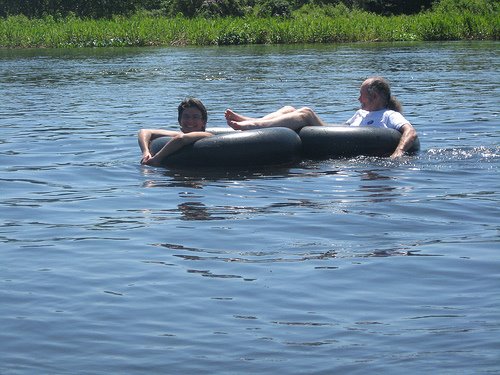You never know what the bus temperature will be. This bus was very cold at the beginning of the trip, and very hot at the end. We dress in layers and bring hat, scarf, gloves and a blanket.
In Bolivia there seem to be taxes and tolls for everthing: to enter particular towns or cities, to enter the bus terminal. But usually the tax is only about US 15 cents. I guess the government doesn´t fund the infrastructure, and so this is how they support it. The bus system seems to be great, and as elsewhere in Latin America we´ve never had to wait more than a few minutes for a bus to anywhere we wanted to go.
It´s very, very dry here and people build houses and fences of adobe bricks, like in New Mexico. Mostly it seems to be open range, with no fences. In a few places there are fences made of stones or adobe bricks. Nothing is built of wood. We´ve seen no naturally-growing trees in Bolivia. (There are trees in the plazas). I wonder if the Spanish colonists cut down all of the trees, as they did in parts of Mexico.
In Bolivia and Peru, people on the street call us amigo or amigo, as someone would call out maàm or sir in the US. It´s nice and feels friendly.
The bus stopped at the border and we all walked through immigration. We changed our 140 Bolivianos for 9,000 Chilean pesos, which is less than US $20. On the Chilean side, the road was paved, with an actual dotted line between the lanes, and lines on the edges. There were even signs indicating no passing zones!
After the border we descended in altitude rapidly, and it got drier and drier. First, it looked like Wyoming. Then like Utah with cacti. Then it looked like a gravel pit. Not a plant in site. The land can´t possibly be used for anything except for digging out gravel. Some places are flat, some are hilly, all made of brown dirt.

Then we entered the real desert, with sand and a few desert plants. We descended more and more, until we saw the ocean, the sand dunes, and we were in Iquique!
Something I forgot to mention about Oruro, Bolivia. In the plaza we saw the band KISS, or more likely some guys dressed like the band KISS. I wouldn´t be able to recognize the real guys, but these guys were speaking fluent Spanish. I am guessing that they are not the real KISS, but tons of Bolivian teens were getting their autograph and taking their pictures. So we took their picture, too!
Also about Oruro, it was very easy to ride the local buses, which come every few minutes. We never waited longer than two minutes. The buses are really more like vans. You stand on a corner on the route, watch for a bus with a sign in the window that says where you want to go, and flag it down. Pay about US 20 cents, and get a seat if you can. By the time the bus reaches its destination, you have given your seat to an elderly person or a woman with a baby in a blanket tied to her back, and you are standing in the aisle amid women carrying huge packs of something wrapped in brightly colored blankets. When you want to get off, you shout "a la esquina" or "at the corner" and the driver will stop and let you off. You have to squeeze through all the people and the blanket packs in the aisle until you finally pop out of the bus!
In Bolivia there is a kind of giant popcorn called pasankàlla. It is sweet (flavored with sugar) and you can buy it on the street. You can also buy corn on the cob on the street, and the kernels are huge! Maybe that´s why the popcorn is so huge. In Mexico, popcorn is palomitas. In Peru it´s manà. And in Chile it´s polulo. Pasankàlla in Bolivia. You can see why it´s hard to keep track of the names of food!

1 comment:
Da duke; They shall come to the feet of the master.
Who was Hugo Chavez making remarks about, the United States? Spain has always been a no show and the time they showed up was to participate in the illadvised occupation of Iraq.
Many brave noble men and women of the International Brigades were killed by the Spanish facists. Many of the same rich families that approved Franco are still in charge of politics and the economy and are probaly still facists.
What ever was in those colorful bundles had to be commodities. Nothing mysterious.
Post a Comment